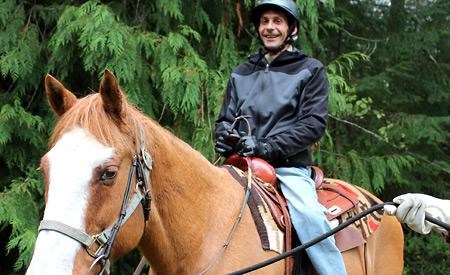It might not be a simple conversation, but for Dale Lawson it’s an important one and she wants more people in it.
Lawson is the executive director of Powell River and District United Way. The organization is in the middle of its yearly campaign to encourage more community involvement and express gratitude to everyone who participated last year.
“The work that happens here is different than the work that happens in other communities,” said Lawson. “The board works hard sharing your donor dollar as widely as possible throughout our community.”
In 2005 United Way, as a national organization, underwent a shift. Previously, local United Ways collected funds and then remitted them to the national organization. The funds were then divided up to national charity organizations. Since 2005 the 118 local United Ways have become much more autonomous by adopting a community impact model. Money donated in the community stays in the community.
“Having a community impact model means responding to the needs of your own community,” said Lawson. “So you’re seeing less generated resources going off to head offices.”
Powell River’s United Way currently funds more than eight charities or community organizations but is accepting applications from other registered charities that meet the criteria of its three local priorities and wish to be funded next year. It currently funds a variety of programs from counselling people who have suffered physical or sexual abuse, to helping people with disabilities ride a horse, to aiding the Powell River Brain Injury Society run some of its programs.
“There are so many programs attached,” she said. “Every little donation helps.”
To receive funding from United Way the organization must meet at least one of the three local priorities, though many meet two or all three. Organizations must support independence in health, support children and families, and strengthen and engage the community.
United Way currently provides funding support to Powell River Association for Community Living (PRACL); brain injury society; Westcoast Access; Powell River Therapeutic Riding Association; Powell River Child, Youth and Family Services; Powell River Model Community for Persons with Disabilities; Powell River Model Community for Persons with Disabilities and Vancouver Island University; and BC Children’s Hospital.
“It’s a one-stop shop for donating,” she said. “You don’t have to decide if therapeutic riding is more valuable than funding PRACL through your personal donations.”
In addition to the eight charities United Way supports, it also runs its own programs like Success by 6 which runs the popular ORCA (On the Road with Children’s Activities) Bus program, a mobile early childhood education classroom. Another initiative is Volunteer Powell River, a program that helps promote volunteerism in the community.
There are three ways individuals can contribute to United Way. A large part of the donations come through the charity’s payroll deduction program. Participants make a regular donation directly from their paycheque and then have it totalled up at the end of the year. If the donation amounts to over $20 a charitable donation amount is printed on the participant’s T4 slip, the slip used for helping calculate income tax. If participants want to make monthly donations, but not through their employer, they can opt for a preauthorized debit withdrawal from the participant’s bank account. United Way will send a charitable donation receipt at the end of the year. Of course, the organization accepts one-time lump sum donations as well.
For more information about Powell River and District United Way, readers can visit its website or call 604.485.2132.



